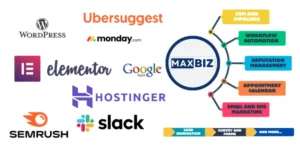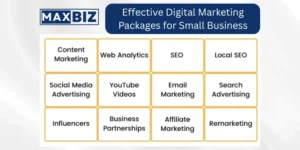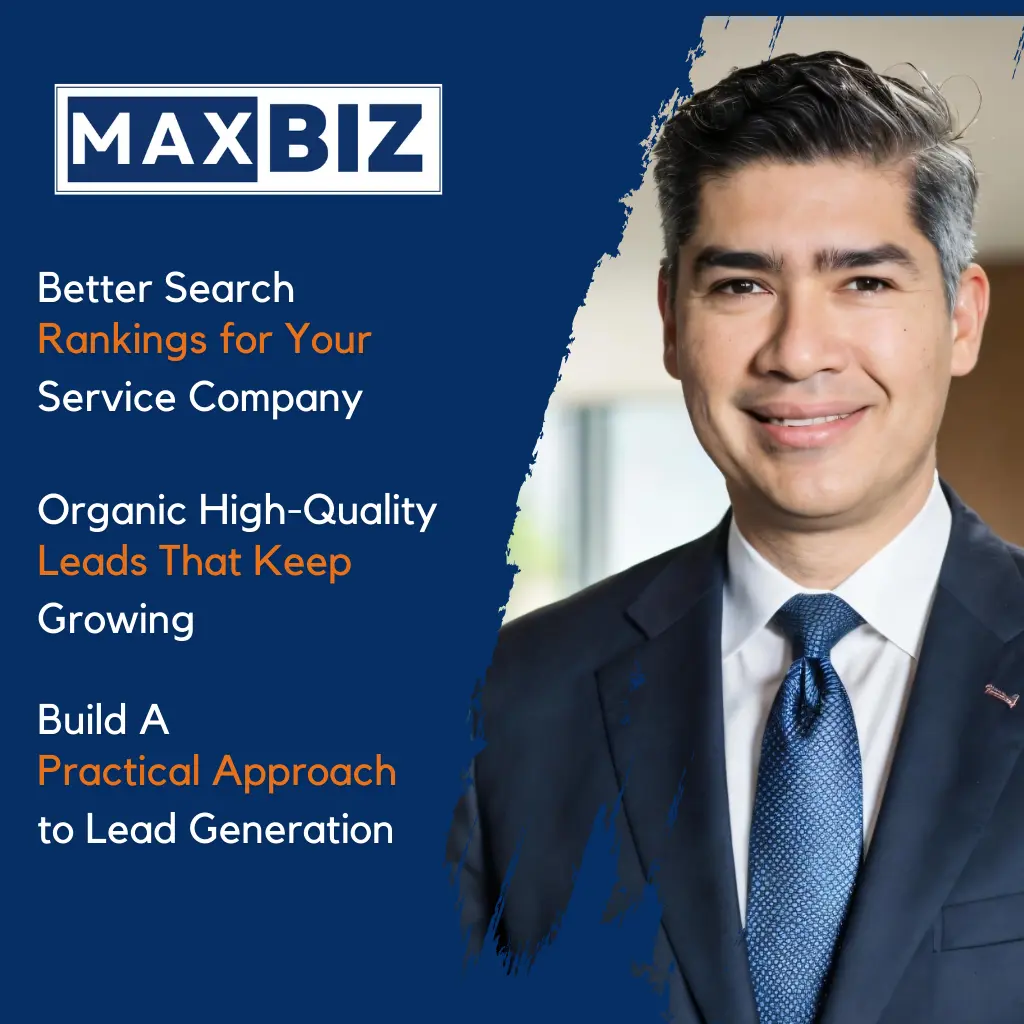The Intersection of Content and Marketing: A Comprehensive Guide
Content and marketing collaborate closely to draw in, captivate, and maintain customers. Content enables businesses to connect with their audience by providing valuable insights. For instance, blogs can increase lead generation by 67%, demonstrating their importance in any plan.
Businesses should carefully craft content to align with each phase of the buyer’s journey—awareness, consideration, and decision.
Strategic content planning reduces costs while producing more leads than traditional approaches. Inbound marketing through impactful posts costs 62% less yet achieves three times the outcomes.
To remain competitive, brands require well-thought-out strategies that prioritise a deep understanding of the target audience and effectively achieve specific business objectives.
Understanding the Basics of Content Marketing

Content marketing combines valuable information with smart strategies. It helps businesses connect directly with their audience to foster reliability and enhance recognition.
The Role of Content in Today’s Marketing Strategies
Content plays a pivotal role in how businesses connect with people. It helps attract, engage, and retain an audience by providing value. Brands use it to showcase expertise, enhance awareness, and foster loyalty while boosting online presence.
Over 67% of B2B marketers have reported higher engagement and leads thanks to content marketing.
Well-crafted content enhances lead generation and customer retention. It strengthens brand recognition and trust. Businesses can maintain customer loyalty by sharing helpful blogs or videos that solve problems or answer questions.
A strong emphasis on excellence ensures the enduring success of any strategy.
Different Types of Content and Their Purposes
Content takes many forms, each serving a unique purpose. Blogs are affordable and help improve website visibility. They range between 500 to over 2,000 words and adapt to various topics.
Vlogs capture attention visually; data shows 91% of consumers prefer video content today. Podcasts target niche audiences with in-depth discussions, attracting increasing listeners.
Infographics make complex details simple and easy to grasp quickly. Ebooks act as lead magnets for B2B companies by offering exclusive insights. Case studies showcase customer success stories while showing real-world results businesses can achieve using services or products like MaxBiz offers.
Email newsletters keep customers informed regularly, sustaining interest effectively over time.
Strategies for Effective Content Marketing
Start by understanding who your audience is and what they require. Develop content that aligns with their interests and addresses their challenges.
Identifying Your Target Audience
Understand your audience’s challenges and priorities. Focus on their needs to create material that is meaningful to them. Customise messages to provide solutions to their problems and address pain points directly.
44% of buyers read 3-5 pieces of vendor material before making contact. Use this insight to connect better with focused material creation. Study buyer behaviour statistics and consumption habits for more accurate strategies.
Crafting a Content Strategy That Aligns with Business Goals
Set SMART goals to guide your content plan. Make them specific, measurable, and aligned with your business objectives. For example, aim to increase website traffic by 20% in three months or boost conversions by 15%.
These clear targets help focus your efforts.
Determine key performance indicators (KPIs) like site visits, sales, mentions, and conversions. Allocate budget for tools to monitor these metrics. Use freelancers when needed for high-calibre content creation while managing costs effectively.
Strategically plan advertising expenses to maximise returns on investment.
Move forward by identifying who you’re speaking to—understanding your target audience is crucial for effective strategies!
Content Creation: Tips and Best Practices
Creating meaningful content requires careful planning and attention. Use straightforward ideas and always strive to align with your audience’s interests.
Generating Ideas That Resonate with Your Audience
Discover audience concerns and provide genuine solutions. Use resources like HubSpot Academy or Content Marketing Institute as a source of inspiration. Address their challenges directly, providing straightforward advice they can implement.
Studies indicate 70% of people prefer learning through articles over advertisements, so prioritise educating over promoting.
Connect with readers using relatable ideas and examples tailored to their needs. Ensure your content is clear and accessible for all skill levels. Strive to offer valuable information that addresses practical challenges.
Ensuring Quality and Consistency in Your Content
Write with clarity and avoid complicated terms. Use straightforward language to engage your audience. Follow set style guides to maintain a uniform brand voice. A steady tone fosters trust and makes your content stand out.
Stick to a feasible plan for producing content. Track schedules carefully to meet deadlines while maintaining quality. Ensure all content aligns with brand messaging, creating a unified experience across channels.
Make content practical and simple to grasp, delivering genuine value throughout.
Leveraging Different Platforms for Content Distribution
Reach your audience by sharing material on the appropriate platforms. Utilise each platform’s advantages to enhance reach and effectiveness.
The Importance of Multi-Channel Marketing
Using multiple platforms helps reach more people. Each platform has its own style, tone, and audience needs. Customising content to align with these preferences enhances effectiveness.
Social media advertising performs well when adapted to suit each platform’s unique voice and behaviour. For instance, LinkedIn is ideal for professional-focused posts, whereas Instagram suits visually-driven narratives.
87% of social sellers state that utilising several channels enhances sales efforts. 59% reported improved sales outcomes compared to 2022 solely through this method. Multi-channel marketing expands reach and sales efficiency by connecting with audiences where they are most engaged.
It bolsters overall strategy by offering diverse content distribution opportunities tailored to individual platforms’ advantages.
Tailoring Content for Different Platforms
Different platforms require tailored content. Instagram excels with visuals, such as GoPro’s remarkable photos, which expanded their following to over 20 million. TikTok flourishes with entertaining and short videos, as demonstrated by Chipotle’s approach that gained them 2.3 million followers and 53 million likes.
Concentrate on channels with the most potential to connect with your audience. Refine your approach by experimenting with what resonates through views or interaction. Adjust styles—what performs well on one platform might not succeed on another.
Measuring the Success of Your Content Marketing Efforts
Monitor the performance of your content to evaluate its impact. Utilise tools that provide insights into effective strategies and areas for improvement.
Key Performance Indicators (KPIs) for Content Marketing
Key Performance Indicators (KPIs) show the success of content marketing efforts. Website traffic tracks how many users visit your site. Action rates measure outcomes, like signing up or buying products.
Lead generation counts new potential customers gained through content.
Sales metrics reveal direct impact on revenue. Brand mentions on social media highlight visibility and reach. Content marketing generates three times more leads than outbound methods while significantly reducing costs.
These KPIs guide improvements and demonstrate cost efficiency in strategies.
Tools and Techniques for Tracking and Analysis
Google Analytics helps track website visitors and blog traffic. It shows where users come from, which pages they like, and how long they stay. Sprout Social focuses on social media engagement.
It monitors likes, shares, and comments across platforms.
Evaluate organic search results with tools that check keywords and rankings. Organic searches make up 85.19% of blog traffic—so prioritising this area is essential. Use tracking methods to determine what content generates the most activity or leads online.
The Future of Content Marketing
Content marketing is evolving rapidly with innovative tools and concepts. Businesses must remain adaptable to address shifting audience requirements.
Emerging Trends and Technologies
Video marketing is growing fast. Short-form videos are set to dominate, with 30% of marketers adopting them. Platforms like Instagram Reels and TikTok lead this trend. These videos capture attention rapidly and enhance audience interaction.
Artificial intelligence (AI) is transforming content creation. AI assists in producing blogs, ads, and posts more efficiently. About 45% of marketers already use it, while 14% still face challenges in creating content that attracts leads.
Tools like ChatGPT or Canva’s AI features streamline processes and inspire fresh ideas for digital marketing campaigns.
Preparing Your Content Strategy for the Future
Plan for shifts in consumer behaviour. Focus on connecting with your audience through digital content and social media. 56% of marketers plan to increase investment on TikTok. Keep an eye on movements like this to guide strategy.
Use marketing strategies to align your goals with revenue generation priorities, as chosen by 24% of marketers. Adjust content strategy for a changing online presence while exploring advanced tools or AI technologies to enhance effectiveness.
Case Studies: Successful Content Marketing Campaigns
Great campaigns capture interest and achieve outcomes. Explore real examples to understand which strategies set them apart.
Analysis of What Worked and Why
Chipotle’s “A Future Begins” video resonated deeply. It utilised emotion and storytelling to highlight sustainable farming, making it unforgettable and widely shared online. Red Bull concentrated on extreme sports events like Felix Baumgartner’s space jump.
The high-energy stunts reflected its daring brand, increasing interaction with fans.
Trader Joe’s branded podcast was straightforward yet ingenious. It featured food and lifestyle content while keeping their approachable tone, which customers appreciated. Credo Beauty used clean beauty tutorials to inform users about products in the industry.
These tutorials fostered trust by aligning with eco-conscious values shoppers prioritise most today.
Lessons Learned and Best Practices
Ocean Spray’s highly popular TikTok campaign with Nathan Apodaca highlighted the strength of captivating content. A simple video featuring cranberry juice and a skateboard turned into an international success.
Regularity, relatable imagery, and genuine messaging stood out. Innovative storytelling made their brand unforgettable without feeling contrived.
Dollar Shave Club leveraged humour in its impactful marketing videos. Their first ad attracted over 12 million views in no time. It demonstrated that daring concepts can lead to effective brand promotion.
Prioritising sharable social media content enables campaigns to gain momentum quickly.
Comparison Table: Traditional Marketing vs Content Marketing
Traditional marketing uses direct approaches like TV ads or flyers. Sharing valuable and engaging materials helps to build stronger connections with audiences.
Overview of Key Differences and Similarities
Outbound strategies in conventional marketing push messages to customers. These include TV ads, billboards, and direct mail. Content-based marketing utilises inbound strategies like blogs, videos, and social media to attract users.
One focuses on promotion; the other aims for engagement driven by valuable information.
Content marketing generates three times more leads while being significantly more cost-effective than outbound methods. It works by fostering trust and delivering meaningful value over time.
Conventional methods often prioritise rapid customer acquisition but can be more expensive with a limited long-term return. Both aim to connect with their target audience but function differently to achieve business objectives.
Impact on Business Objectives and ROI
Businesses with blogs generate 67% more leads than those without. This highlights how strategic content marketing supports business goals and measurable outcomes. It attracts potential customers while enhancing interaction levels.
67% of B2B marketers report improved connections and higher lead generation through content marketing. Compared to traditional approaches, it achieves tangible results aligned directly with business targets.
Exploring the Synergy Between Marketing and Content
Marketing and content collaborate closely to establish strong connections with your audience. High-quality content supports marketing goals by providing value, fostering trust, and enhancing visibility.
The Vital Role of Content in Marketing Strategies Today
Content connects businesses with audiences. It drives lead generation, supports consumer research, and turns prospects into buyers. Good content uses targeted keywords to enhance search engine visibility.
Headline promises must match the actual value delivered; search engines now prioritise relevance over tricks.
Effective marketing content establishes trust and educates customers. Simple-language keywords make it easier for people to find what they need. High-quality content also aligns directly with business objectives like boosting sales or enhancing brand awareness.
How Content Marketing Works: A Guide to Success
In the modern digital world, content marketing work is no longer a luxury—it’s a necessity. Businesses that create valuable, engaging, and targeted content thrive in their industries. If you’re looking to understand how content marketing work can elevate your brand, this comprehensive guide is for you. From crafting a winning content marketing strategy to leveraging the power of SEO and b2b marketing, MaxBiz has you covered.
Outline
- What is Content Marketing and Why Does it Work?
- Why is a Content Marketing Strategy Essential?
- The Role of SEO in Content Marketing
- How to Position Your Brand as a Thought Leader
- Exploring Content Formats for Maximum Impact
- The Importance of B2B Content Marketing
- Using Content Management Software for Success
- Elevate Your Content with Personalisation
- Metrics to Measure the Success of Content Marketing
- MaxBiz: Your Partner in Content Marketing
What is Content Marketing and Why Does it Work?
At its core, content marketing is about creating and distributing informative content that resonates with your audience. This can include blog posts, white papers, social media posts, and more. But content marketing doesn’t end with creation—it involves tailoring content to attract and engage your target audience.
Why It Works
- Engagement: Content that speaks directly to a customer’s needs fosters trust.
- Drive Traffic: High-quality content optimised for search engine optimization (SEO) brings consistent visitors to your website.
- Generate Leads: Informative content entices potential customers and nudges them along the sales funnel.
Why is a Content Marketing Strategy Essential?
A successful content marketing strategy ensures your efforts are purposeful and effective. Without a plan, content production can lack direction, leading to missed opportunities.
Benefits of a Defined Strategy
| With a Strategy | Without a Strategy |
|---|---|
| Clear goals for content | Disorganised campaigns |
| Consistent branding | Disjointed messaging |
| Measurable outcomes | Difficulty tracking progress |
The Role of SEO in Content Marketing
SEO is a powerful tool that complements your content marketing efforts. By optimising your content for search engines, you improve its visibility and relevance.
Key SEO Techniques:
- Keyword Integration: Use terms your audience is searching for, such as “generate leads” or “content marketing strategy”.
- Quality Content: Search engines prioritise quality content that answers users’ questions.
- Link Building: Create a network of internal and external links to boost authority.
How to Position Your Brand as a Thought Leader
Content marketing provides an excellent opportunity to position your brand as an authority in your industry. By creating and distributing branded content that solves problems or provides new insights, you build trust and credibility.
Steps to Become a Thought Leader:
- Publish content to attract audiences at every stage of their customer journey.
- Share editorial content that highlights industry trends.
- Engage on social media platforms to foster connections.
Exploring Content Formats for Maximum Impact
Different audiences prefer different ways of consuming content. By using varied content formats, you can expand your reach and engage more effectively.
Examples of Formats:
- Blog Posts: Ideal for storytelling and SEO.
- White Papers: Provide in-depth insights into industry topics.
- Video Content: Engages audiences visually and emotionally.
- Social Media Posts: Short, snappy updates to keep your brand top-of-mind.
The Importance of B2B Content Marketing
B2B content marketing differs from B2C by focusing on building long-term relationships and educating professional buyers. It requires a blend of relevant content and well-researched insights.
Why It’s Effective:
- Educate Decision-Makers: Use content marketing strategies to address the challenges faced by businesses.
- Build Trust: Thoughtful, user-generated case studies and testimonials resonate with professional audiences.
Using Content Management Software for Success
Efficiently managing a content marketing plan is key to consistency and quality. Leveraging content management software allows teams to track progress, manage deadlines, and ensure all content aligns with the strategy.
Benefits:
- Centralised Hub: A one-stop shop for all content pieces.
- Content Calendar: Plan and schedule posts for peak impact.
- Analytics Tools: Measure performance and adjust strategies accordingly.
Elevate Your Content with Personalisation
Personalised content goes beyond generic messaging to address specific customer pain points. By tailoring your marketing channels to different audience segments, you can improve engagement and conversion rates.
How to Create Personalised Content:
- Use data to understand audience preferences.
- Develop content tailored to various buyer personas.
- Incorporate dynamic features like personalised recommendations in emails.
Metrics to Measure the Success of Content Marketing
Understanding how well your content marketing initiatives perform is essential for improvement. Metrics like engagement rates, lead generation, and ROI highlight what works and where to refine.
Key Metrics:
- Traffic: How many visitors does your content attract?
- Engagement: Are readers sharing or commenting on your posts?
- Conversions: Does your content lead to tangible business outcomes?
MaxBiz: Your Partner in Content Marketing
At MaxBiz, we specialise in creating and executing strategies that drive results. Our team of content marketers and strategists work collaboratively to craft content that resonates with your audience and delivers on your goals.
Why Choose MaxBiz:
- Expertise in developing effective content marketing strategies.
- Proven track record in helping businesses achieve higher visibility and engagement.
- Customised solutions for B2B and B2C clients.
Key Takeaways
- Content Marketing Works: It builds trust, drives traffic, and generates leads.
- Strategy is Essential: A defined content marketing strategy keeps efforts focused.
- SEO is Critical: Optimised content improves visibility and search rankings.
- Diverse Formats Engage: Use various content formats to cater to different audiences.
- Measure Performance: Metrics are crucial for refining and improving strategies.
Ready to elevate your brand with MaxBiz? Let’s work together to create content that drives results. Contact us today!
FAQs
1. What is content and marketing?
Content and marketing combine creating useful information with strategies to promote it, helping businesses connect with their audience.
2. Why is good content important in marketing?
Good content builds trust, attracts customers, and keeps them engaged—it’s the foundation of successful campaigns.
3. How do businesses use content for better marketing?
Businesses share blogs, videos, or social posts to inform customers about products or services while boosting visibility online.
4. Can small companies benefit from content marketing too?
Yes! Even small companies can grow by using simple strategies like sharing helpful tips or promoting stories that matter to their audience.






